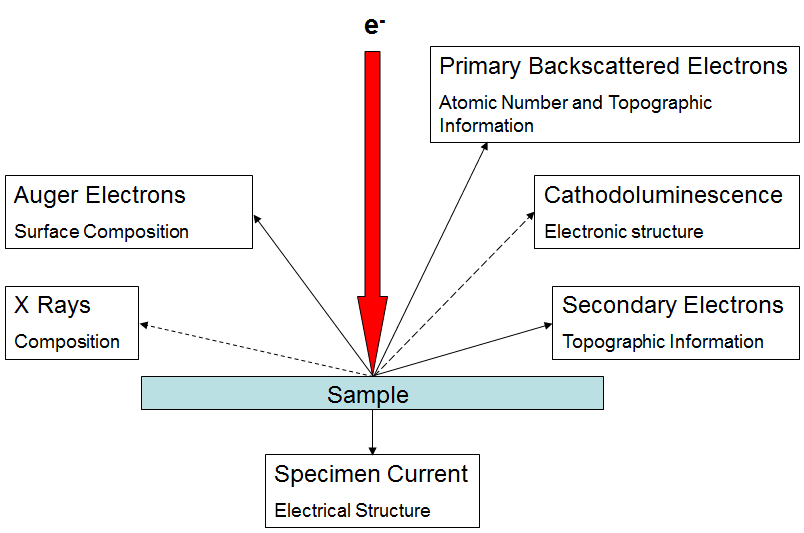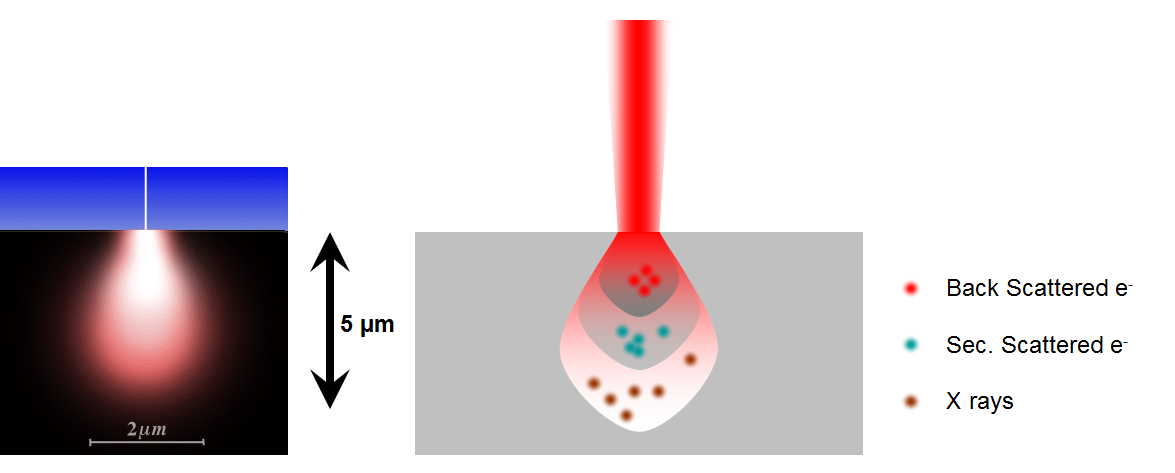3.1.3 Electrons
The electrons impinging in the sample undergo different interactions, including the ionization of the sample and the emission of characteristic radiation.

The more used electron excitation sources are the electron guns from electron microscopes. The small diameter of the electron beams brings as a major advantage a high spatial resolution, usually determined by the effective volume of interaction of electrons in the sample (from a few to some tens of micrometres, depending on the electron initial energy).

The main disadvantage of excitation with electrons is the electrostatic charging of non-conducting specimens, which leads to a decrease in the interactions. Electron inelastic scattering also produces secondary electrons in the sample and radiolysis processes. Additionally, as electrons have rest mass and appreciable momentum knock-on displacement damage can be produced in the samples. These effects make it impossible to use higher intensity electron beams from other types of accelerators for x-ray excitation.